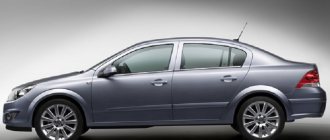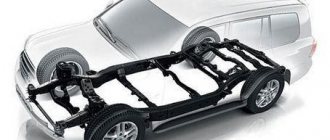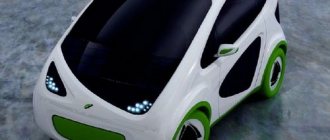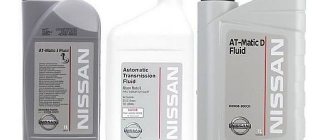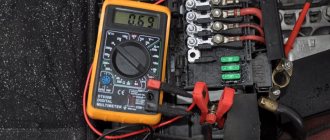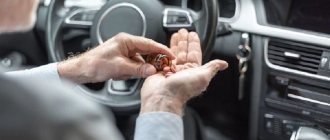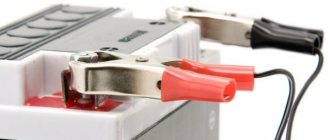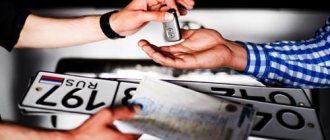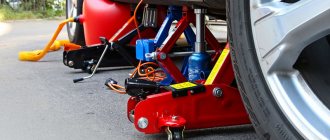Statistics show that about a quarter of all accidents occur due to driver fatigue during a long trip. The studies carried out did not give very reassuring results: after four hours of continuous driving, the driver’s reactions slow down by half, and after eight - six times. Every automaker strives to make their cars as safe as possible, hence the first idea to develop a driver fatigue sensor that could recognize the degree of fatigue and signal the need to stop for a rest.
How did the driver fatigue monitoring system come about?
The first company to seriously begin implementing a driver fatigue monitoring system was the Japanese company Nissan. She began her research in the 70s of the last century, and in 1977 the company patented the results of the work of its engineers. A temporary obstacle to further work was the interest in simpler, but no less important safety systems, namely ABS, ESP and EBD. As a result, the first driver fatigue monitoring system on a car appeared almost thirty-odd years later, when the operation of other systems could only be improved.
The first company that managed to put all engineering research into practice was the Swedish company Volvo. Its system is called Driver Alert Control. It includes a video camera that tracks the position of the car on the road and its trajectory, and a sensor that records the frequency of steering movements. When the car begins to deviate significantly from the normal trajectory, the system “suggests” stopping and resting.
Later, a similar fatigue detection system was developed by Mercedes. The Germans decided not to use a camera, leaving only a steering wheel sensor and a sensor that records the force and frequency of pedal strokes. The system's control unit contains information about what average indicators should be if a cheerful and attentive driver is behind the wheel. If the current values differ significantly from the reference values, it means the driver is tired. The disadvantage of the system is that it works according to presets, i.e. does not take into account the characteristics of a particular person. In later versions of the systems, the frequency of pressing the climate control and radio buttons is also analyzed, as well as external conditions - the strength of the side wind and the quality of the road surface. This allowed the system to adapt to the specific driver.
Similar systems are used on Volkswagen and Skoda cars. On Skoda Octavia cars it is installed only as an option, regardless of the configuration, while the Passat has it standard, starting with the Comfortline configuration.
Don't just look straight ahead
Even if you are not sleepy or tired, any distraction can cause an accident. That's why every year there are more and more cars on the road equipped with collision warning systems that warn you of possible danger. For example, Ford uses a collision warning system that scans the environment around the car. The same system is available in Volvo cars. But Ford uses radar sensors instead of cameras (Volvo).
If this system is present in the car along with adaptive cruise control, then when the cruise is on, the system, noticing that the car in front of you has stopped, will begin to warn you of the danger. If you ignore the warning, the red LED will flash along with the signal on the windshield. This warning is intended to draw your attention to the danger so that you have time to react to the danger in front of the machine.
Ford has also equipped its vehicles with a simulated braking system to help prevent sudden, aggressive braking that could cause you to be rear-ended by another vehicle behind you. The car doesn't actually slow down, but the brake lights are on, warning the driver of the car behind about possible braking.
Some drivers and passengers find this system annoying due to its loud warning sound and red LED flashing. In our opinion, the manufacturer could have configured the system to be less annoying.
For example, instead of sound, it was possible to use other ways to warn the driver without annoying passengers. Cadillac made this setting in its cars equipped with similar security systems. So instead of a warning sound, the system vibrates the driver's seat.
Ways to implement the system
There are two ways to implement such a function. In the first case, a special sensor records only the vehicle’s movement parameters, namely the frequency and amplitude of steering movements, pressing the gas and brake pedals. Supporters of this option are European manufacturers: Mercedes, Volkswagen, Skoda, Volvo.
Japanese companies are striving to implement driver fatigue control somewhat differently. They are convinced that first of all it is necessary to analyze the psycho-emotional state. Therefore, the main link of such a system is a video camera, the task of which is to monitor the facial expressions and gestures of the person sitting behind the wheel. It works as follows. The driver fatigue detection system primarily reacts to closed eyes. If the driver closes his eyes, the system immediately sounds a warning signal. The engineers are faced with the task of “teaching” it to distinguish when the driver is simply blinking and when he is falling asleep. In addition, the frequency of blinks, eye movements, facial expressions, gestures, frequency and depth of breathing (based on chest movements) are analyzed.
Purpose and functions
The main purpose of the fatigue control system is to prevent accidents. This is done by monitoring the driver, detecting slow reactions and continually recommending rest if the person does not stop. Main functions:
- Vehicle movement control - the solution independently monitors the road, trajectory, and permissible speeds. If the driver violates the speed limit or leaves the lane, the system sounds audible signals to increase the person's attention. After this, notifications about the need to rest will appear.
- Driver monitoring - initially monitors the normal condition of the driver, and then deviations. Implementation using cameras allows you to observe a person, and in case of closing the eyes or dropping the head (signs of sleep), warning signals are sent.
Analysis of the driver's condition using a camera
The main difficulty lies in the technical implementation and training of the equipment to determine real fatigue from false readings. But even this method of implementation will reduce the influence of the human factor on the level of accidents.
Alternative options involve monitoring the driver’s physical condition, when a special device reads body parameters, including blinking, frequency of eyelid drooping, level of eye openness, head position, body tilt and other indicators.
How does the driver fatigue monitoring system work?
In general, regardless of the implementation method, driver fatigue control works as follows. At first, the control unit collects and analyzes all information coming from sensors and video cameras. As a result, the system determines the driver’s driving style and external conditions (time of day, road condition, wind). These data become reference data, and subsequently the incoming information is compared with the existing information for timely recognition of driver fatigue.
Different cars require different times for initial data collection, for example, the Mercedes SLK does it in half an hour, the Volkswagen Passat and Skoda Octavia are limited to 15 minutes.
This approach greatly expands the capabilities of the recognition system, since driver fatigue is monitored not according to some template, but the indicators of a specific person sitting behind the wheel are taken as the initial data.
Benefits of using ITOB ECO-DRIVE
Driving style control reduces transportation costs
ITOB ECO-DRIVE helps reduce the cost of transporting goods and maintaining a vehicle fleet:
- Control of driving style increases the discipline of drivers, gives management the opportunity to staff the staff with neat and competent drivers, firing those who like to drive fast and irresponsible employees;
- Caring for equipment and following the rules of its operation helps prevent premature failure of vehicles, reduces the cost of spare parts, maintenance and repairs. Real savings under CASCO are about 30%;
- Monitoring the actual consumption of fuel and lubricants allows you to eliminate unreasonable consumption or drainage of fuel. Costs for fuel and lubricants are reduced.
Problem #1: postscripts
Drivers tend to assign extra time to completing an order on a paper waybill: for example, they spent two hours on a trip, but reported and received money for four. In our long-term practice, this figure varied from 30 minutes to 8 hours. The driver could say that he had broken down or was stuck in a big traffic jam. He has nowhere to rush - wages are time-based, according to the formula “the soldier sleeps - the service is in progress.”
To avoid damage from such manipulations with reporting, introduce monitoring tools into your work - not an outdated tachograph or beacon, but cloud-based software (fortunately, the market is full of such offers). There is no need to physically attach anything to the truck - just a mobile application on the driver's smartphone. You register his phone number in the system and track all movements of the vehicle and cargo via GPS in real time. Data is read directly from geolocation sensors in drivers' mobile devices.
Unlike telemetry devices, monitoring software also makes it possible to monitor outsourced drivers - they may refuse to install a tachograph or other GPS beacon on their truck. This is also beneficial financially: according to our experience, the use of monitoring systems reduces the costs of both the carrier and the client for each trip by 25-30%. On intracity transportation, the savings amount to about 300 rubles per order.
Drivers are required to press the button in the mobile application twice - when starting work and when finishing it. “Forgetting” will not work - the system shows that the car has already reached the final destination, and the software asks the driver every half hour to confirm arrival at the point. If he misses two such push notifications in a row, the system will automatically close the order.
In the logistics chain, it can be difficult to control the “last mile” - from the moment the truck arrives at the site until it is completely unloaded. This time is also taken into account and paid by the employing company. Collusions occur between the “unloader” and the driver: the first leaves open the time of completion of unloading in the documents, and the second shares half of the amount accumulated during the assigned time.
With the help of modern software, such fraud can be tracked. For example, if the driver stopped for unloading at 12:00, and according to the documents and in the application indicated that he left back at 21:00, there is no question. But the tracking of the car’s movement is constantly active and the driver will have to explain where he went “unloaded”, say, at 13:30. If he turns off the phone, the system will automatically record this action as closing the task.
Before installing this or that application for your drivers, test all possible scenarios “in combat conditions”. Pay attention to how the software behaves when the phone “loses” connection (for example, in an industrial zone or in a tunnel) or if location detection is turned off on it after responding to a task. Also check what happens if the driver stays at one point for longer than expected—does the customer receive notifications about this? Modern and well-designed software will immediately inform the client about all such anomalies, and the driver himself will be asked to confirm his actions.
Photo: istockphoto.com
Problem #2: cashing out fuel cards
Transport companies often issue fuel cards to their drivers, which contain a deposit in the form of a certain number of liters, prepaid by bank transfer - they are written off at each refueling. Many enterprising drivers try to sell excess fuel externally. Once at the gas station, they offer other motorists to refuel using their card, and in return they take cash at a deep discount, which they put in their pocket.
This problem is solved by introducing a “smart” fuel card, which allows online monitoring of its use at specific gas stations. When buying fuel in bulk for your drivers, ask the seller about the availability of this option. This will help minimize the damage from the deception scheme described above. Our company, for example, has organized a personal account with its fuel partner, through which you can track any card and identify abnormal fuel consumption. If a car has driven 100 km in a day, and the driver has accounted for 300 km of fuel, it is natural to assume that the excess will be resold.
